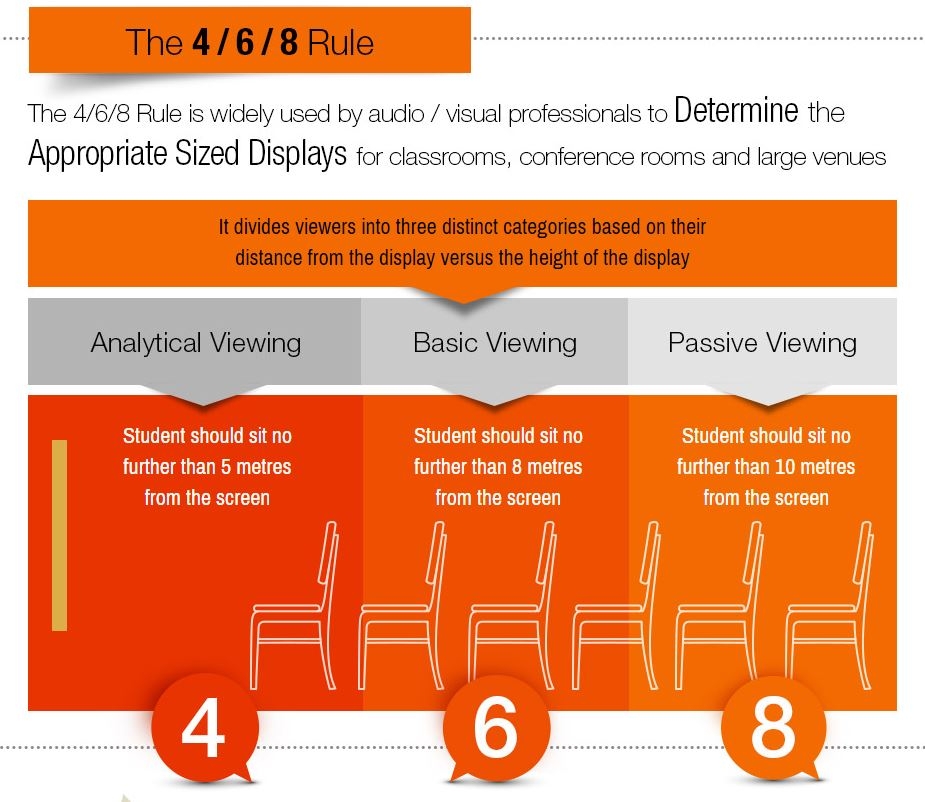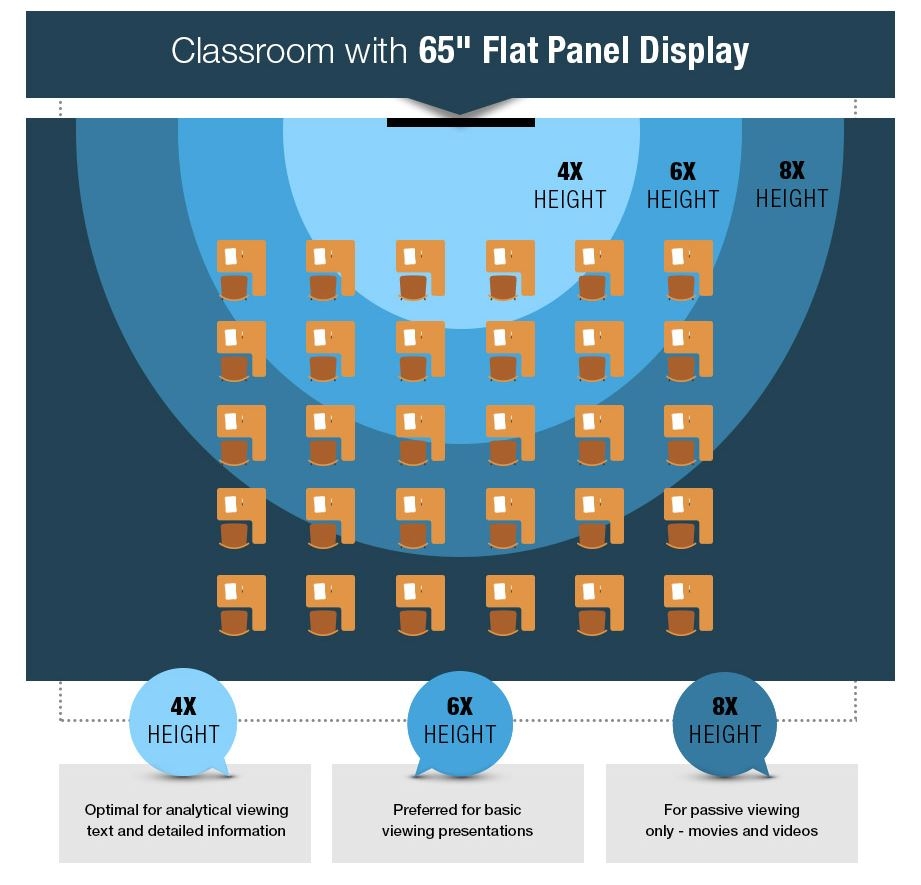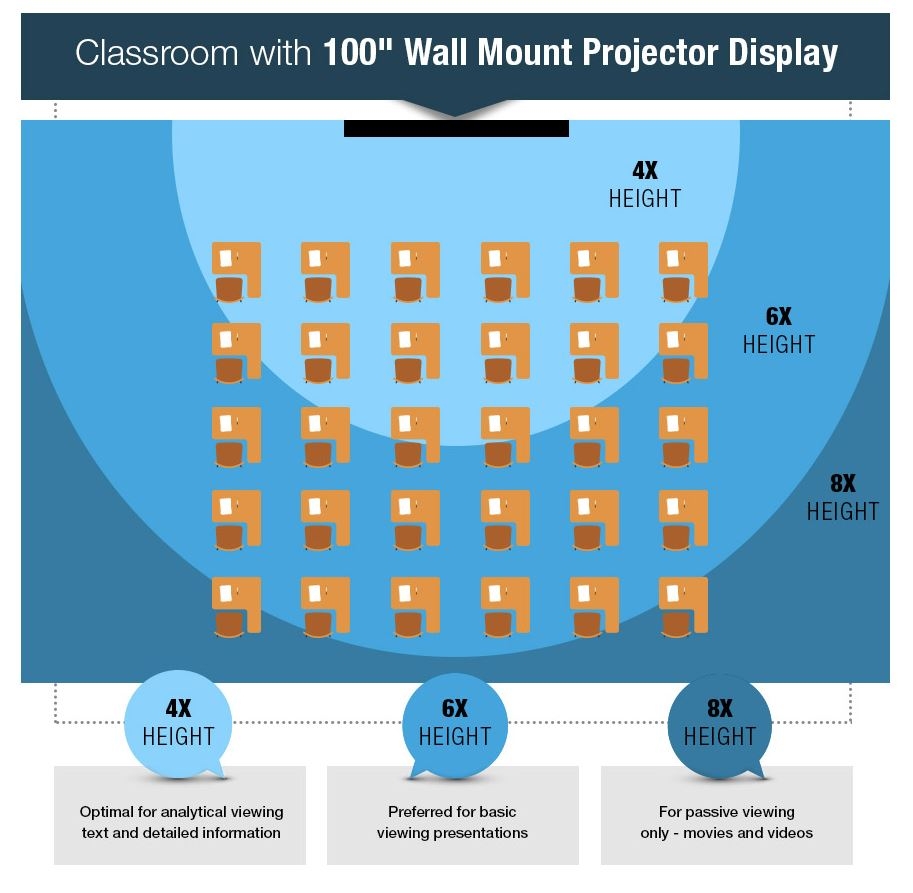In a classroom, meeting space or collaboration space, it is important that people in the room are able to see, read and absorb the content you’re displaying. This is referred to as readability, and when it comes to deciding what AV equipment to have in your spaces, this should always be something to keep in mind. In this Hints & Tips section, we will explore why finding the right display size for your spaces is important for ensuring readability.
A recent study conducted in the U.S. found that in an average classroom, 58% of students were unable to read content displayed on a 70” monitor clearly. When shown numbers, words and phrases of varying sizes (from large headlines to small details) on PowerPoints, text tables and Excel sheets, more than half of the students tested recalled at least one piece of data incorrectly.
To combat this, audio visual professionals use the 4/6/8 rule when deciding what display size would be appropriate for the space under consideration. It lists three different viewing methods that viewers can fall under, depending on how far they are from the display and the height of the display:
- Analytical viewing encompass viewers who are fully immersed in the content and are able to discern and appreciate details. These viewers sit near the front of the room, and usually 4 metres away from the screen.
- Basic viewing encompasses viewers who are actively engaged with the content and is the optimal viewing method for most presentations with a visual element to it. These viewers sit near the middle of the room, and usually 6 metres away from the screen.
- Passive viewing encompasses viewers who are not as engaged with the content, but is able to recognise the image on the screen and understand the intent behind it. These viewers sit near the back of the room, and usually 8 metres away from the screen.

Thus, the bigger the size of the screen, the more space it can cover in the room. This means that more viewers are able to partake in a more analytical and basic viewing of the screen even if they are farther away. To highlight how much more space 100” flat panel can cover compared with a 65” flat panel, see the diagrams below.


So, when deciding what size your screen should be, what you intend to do in the space should be a factor. If it is a learning or collaborative space, it is better to have a larger screen (particularly for lecture theatres and classrooms) so more people can engage in analytical viewing. For more leisure/entertainment purposes such as watching films, basic and passive viewing are acceptable.
DIB Solutions Consultants have extensive experience in providing AV solutions with different sized spaces, from classrooms to big halls. Their comprehensive knowledge can help guide you through deciding the right display sizes for your space.
Contact us to help you plan an AV system for your spaces
For assistance with your custom audio visual requirements, contact a DIB Audio Visual Solutions Consultant today. Phone (03) 9457-4800 or email us at info@dibaustralia.com.au
